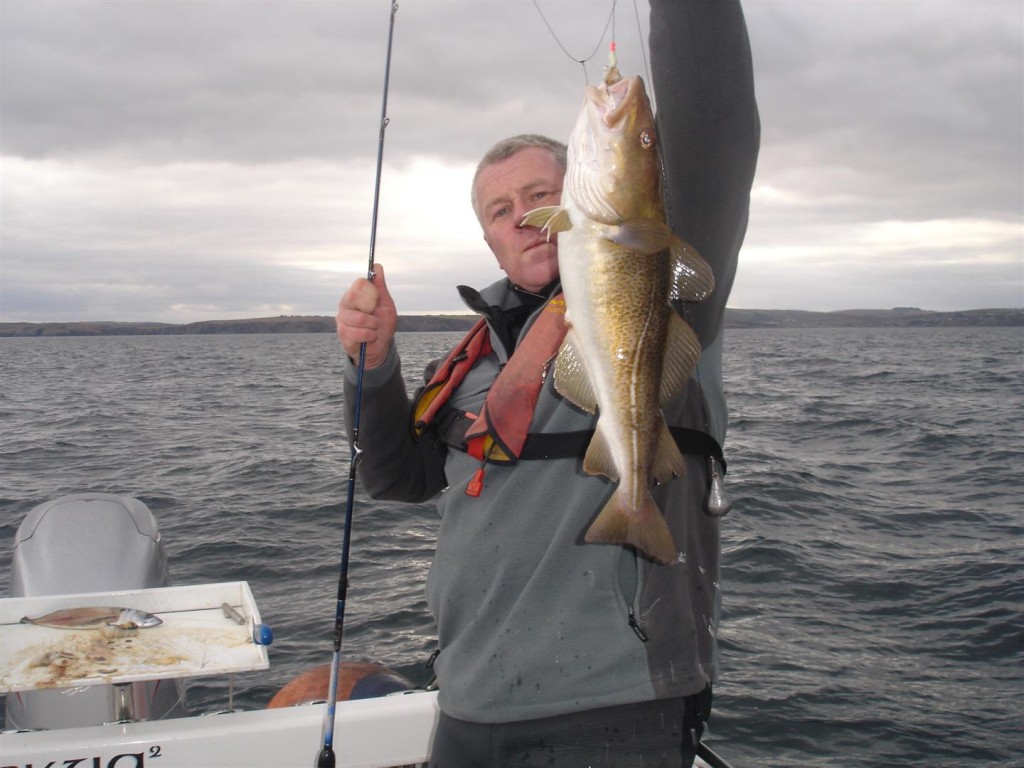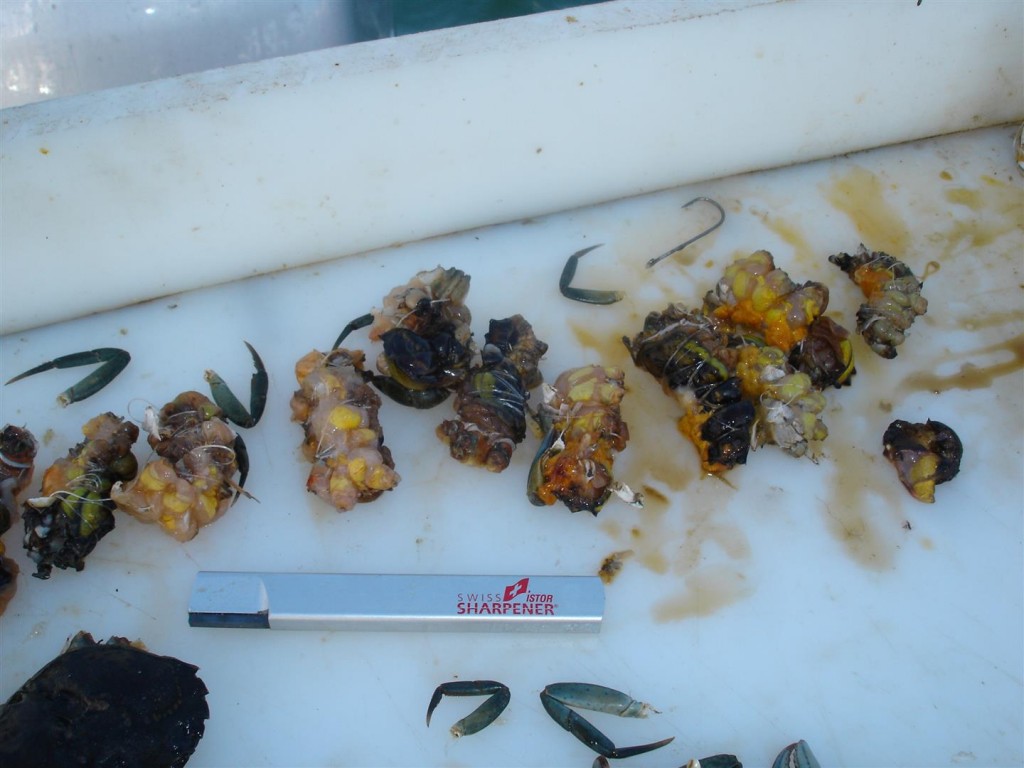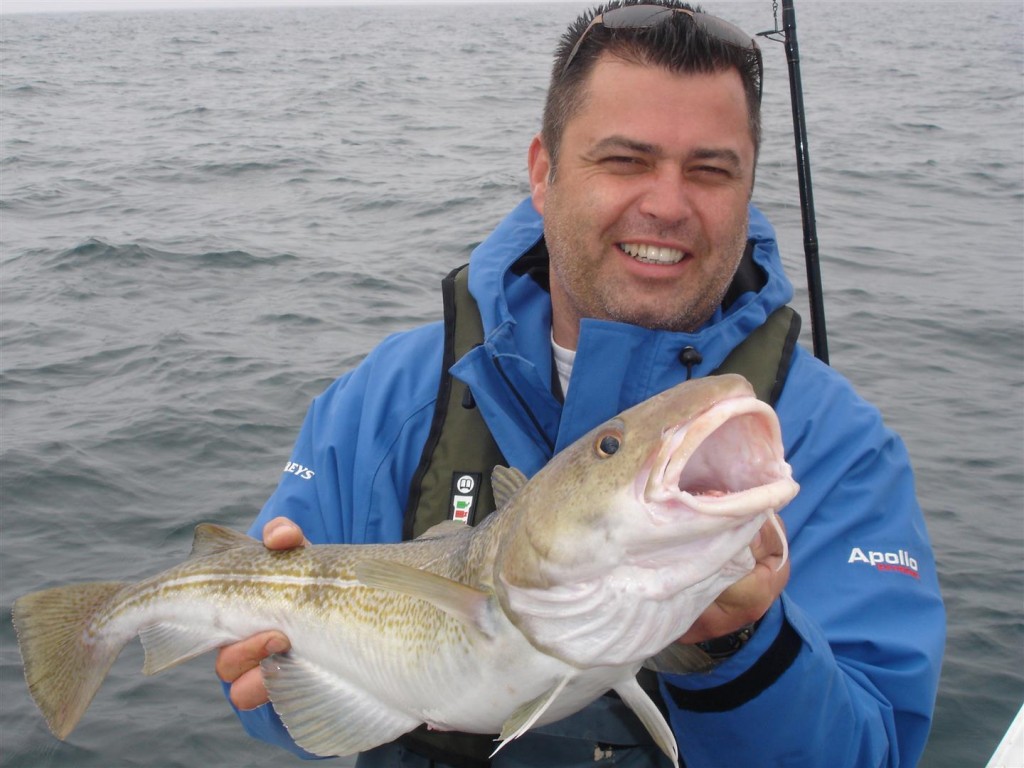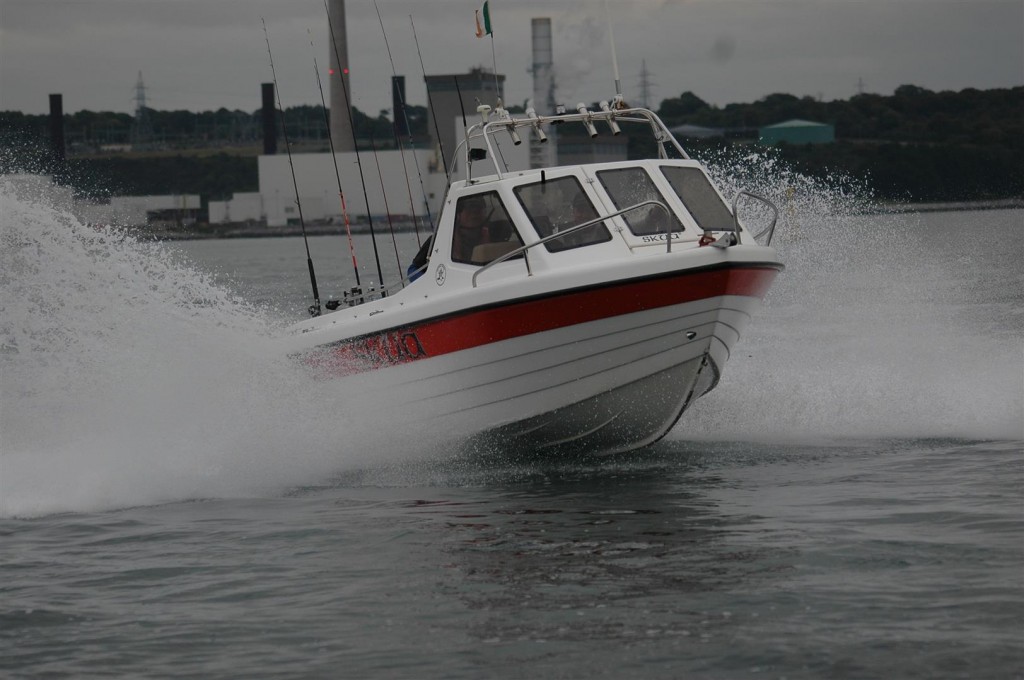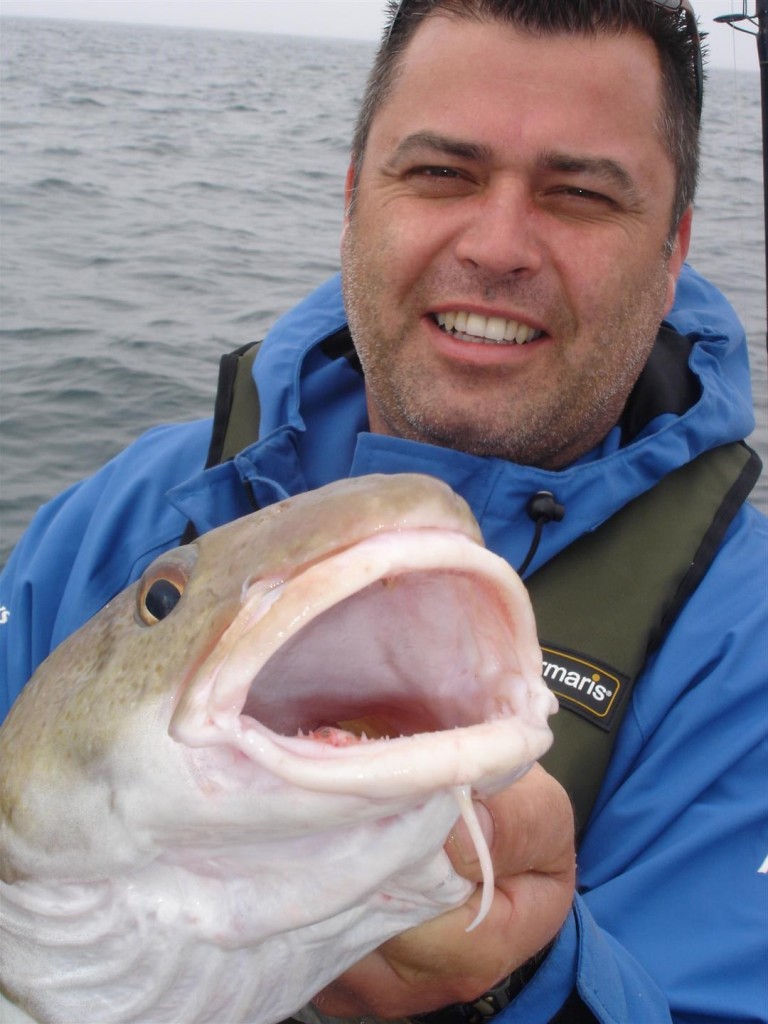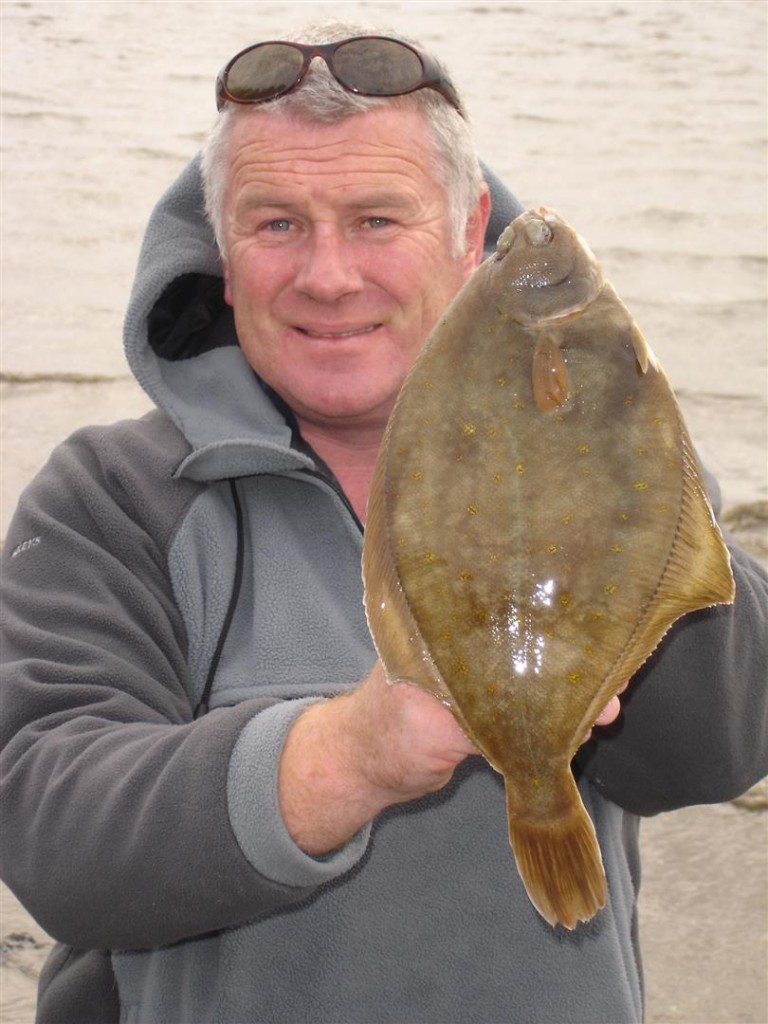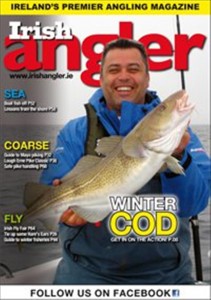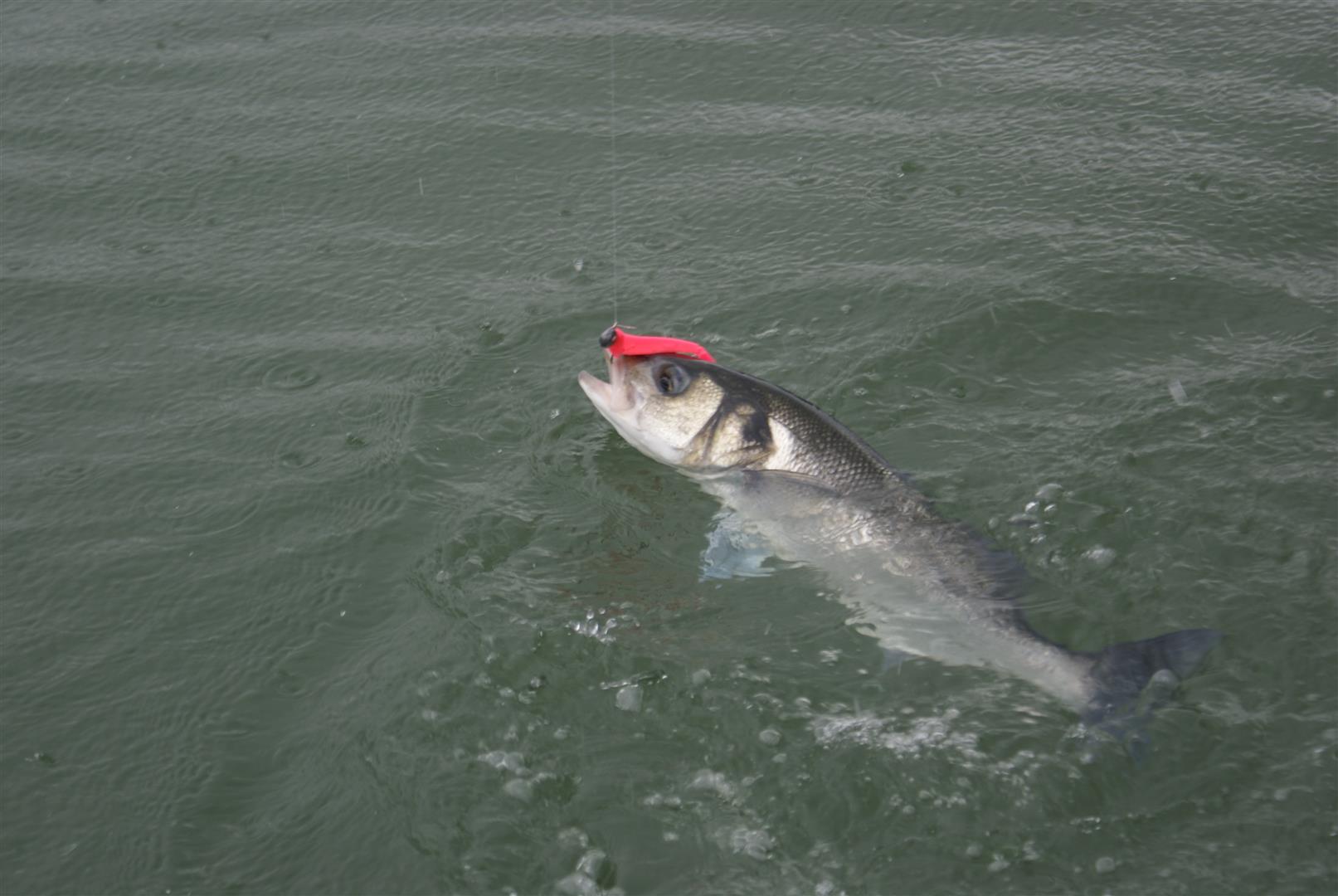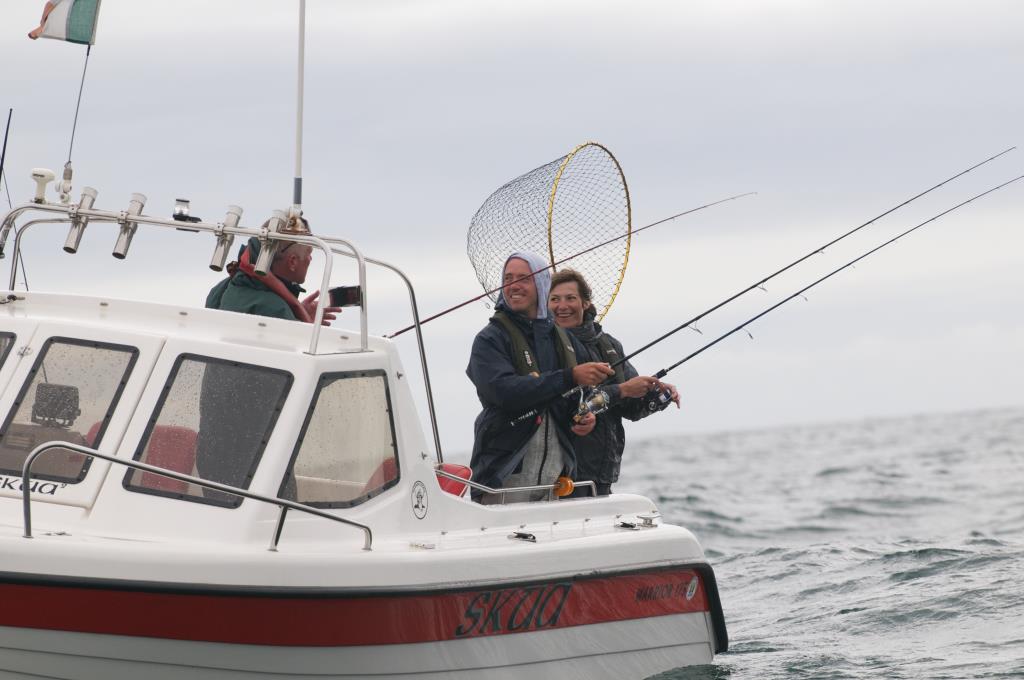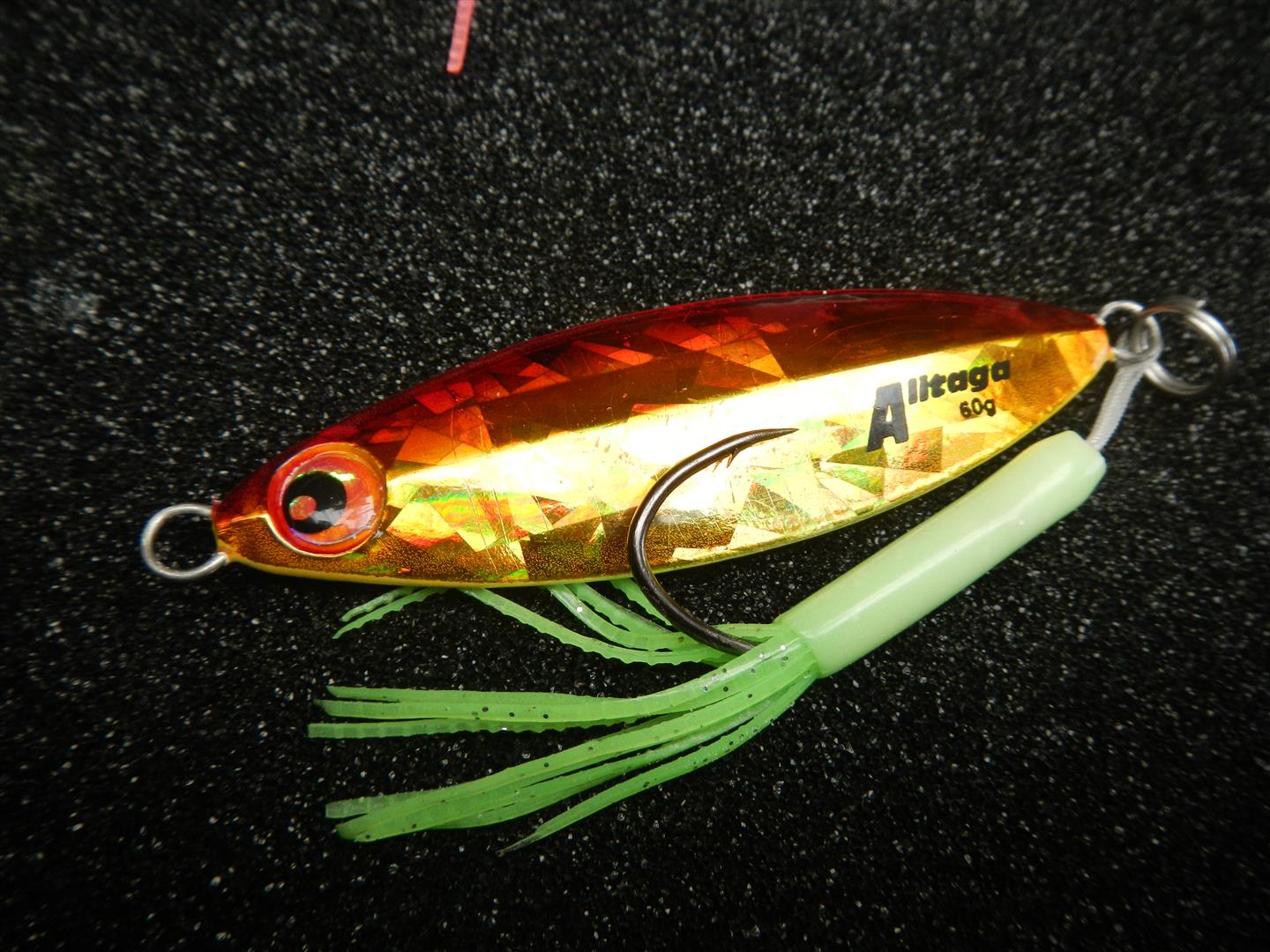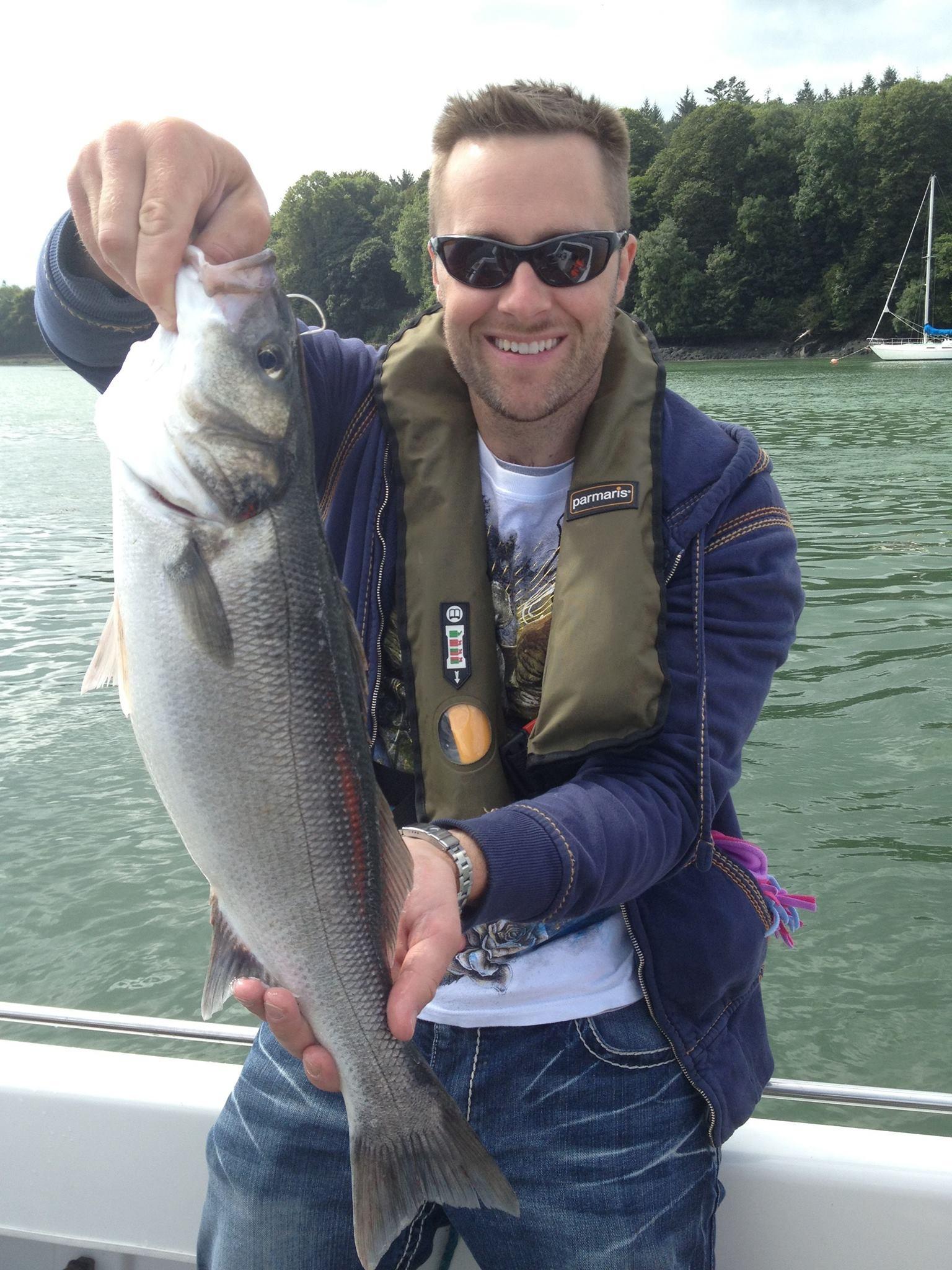*Winter Cod – Time yet!
(Click on any pictures to enlarge)
Winter Cod!
Don’t put away that boat gear yet. There’s action aplenty to be had…The Cod are back! Jim Clohessy gives you the best of help to ensure a result this winter.
It just does not feel right being excited by the arrival of winter yet this year I am somewhat looking forward to some winter boat angling. The reason for my excitement is simple: for the first time in a few years there is some nice cod showing up. Last year Cork Harbour was swamped by a plague of small codling and whiting. This year the overall stamp of fish has improved. Last year the small fish were not worth wading through in order to catch a few elusive bigger fish. This year the fish are worth the effort of getting out there. The return of the cod feels like a new angling experience!
Late in the season I tend to panic. The mackerel that have been so abundant are starting to thin out. Invariably I leave it to the last minute to go and get some for the freezer. I tend to forget about this important bait source. The mackerel I freeze down in autumn are not really for winter fishing but more for the angling springtime – March, April and May – before the mackerel begin to arrive back in our waters.
If you are going to seriously target cod this winter it is important that you have the right bait. Bait is the key to consistent fishing and also getting the bigger fish. Crab baits and worm baits will outperform fish baits or squid. Frozen crab will fool all but the more discerning cod. If you have access to some crab traps, get some crab before the frost puts paid to the majority of the peeling for the rest of the year. Fear not though, your local tackle dealer will surely be able to oblige and may even have some frozen black lug, another good bait, especially over sandy marks. Razor fish can produce good results as well and are worth experimenting with. Basically you will find if there are lot of fish in your area there will be competition among them for food and as a consequence the fish will be a little less fussy.
During the Cork Small Boats Festival we were picking up some decent cod while fishing for blonde rays. When the competition was over I was itching to get out to the outer harbour for a decent session and some nice fish anchored up on the Harbour Rock and the Turbot bank. It was a matter of waiting for a gap in the weather. Catches of codling from Monkstown wall were encouraging. Shore anglers were reporting very consistent action with plenty of fish in the two to three pound class; not monsters but prime fighting fish all the same. I was chomping at the bit to get afloat as I was well organised – plenty bait, plenty traces tied and the boat ready for action.
I never worry too much about the short days at this time of the year. I think the conditions are usually such that if you can last eight hours on the water you are doing well. Key to lasting the longest time are having good clothing and having a nice hot drink during the day. Layers of clothing are preferable to bulky floatation suits. I start with a thermal base layer top and work my way out to a good fleece. At least if the sun does shine, and sometimes it does, I can peel off a layer.
In breezy conditions it is far more comfortable to fish at anchor rather than on the drift. The shelter offered by the cuddy makes a cold day a bit easier to take. Drifting in cold breezes is a recipe for numb hands and I cannot fish with numb hands. I struggle to fish with gloves on so when I can I will anchor. Most of the time I will do some drifting to see if I can locate some cod. Once I have located some fish I will anchor and settle in for some action.
Water clarity is always an issue during the winter season. In harbours where there is an influx of fresh water the water tends to get very murky. The thing is; fish that are used to these murky conditions do not seem to be that much bothered. On the other hand fish that are resident in areas where the water is normally clear seem to struggle when the clarity is messed up by winter storms. I would stick to the harbour marks unless there has been a sustained period of offshore winds or high pressure before trying marks that are within a few miles of the shore.
Getting out on the water during winter is great. It takes a bit more thought and organisation to ensure that you get out and home safely. In many cases your boat may not have been in the water for a few weeks. It is important to test your gear before you leave home base. Batteries do not like cold weather. Check that there is enough charge in your batteries and also check the operation of your electronics. Winter weather plays havoc with electrical connections. At least if you check these things before hitting the slipway you might save yourself some time and grief. It is always easier to fix these things at home base rather than at the launch site. There is a good chance you will be coming home in the dark, possibly on water as well as land, so make sure your lights are in working order: both navigation and trailer lights.
I could not believe it on one of my last trips. I got up in the morning and had to de-ice the boat before I could remove the cover. I had to reach for my gloves before turning the hose on the cover. The water began to freeze around the clips that hold on the cover and as I struggled with the cover I began to question the sanity of winter cod fishing. I hitched up the trailer to the jeep and left it running for a few minutes. The air was crisp and the sky was a stunning blue as the sun crept over the horizon. I knew that there would be some little bit of heat as soon as the sun rose higher in the sky. By the time I reached the slipway the weak-willed sun had just about melted the ice on the trailer and had thawed the ice on the transom. Despite the cold start the day promised to be one of those “special” winter days. High pressure – low sun and calm seas. We loaded Danny Kane’s gear on board before slipping SKUA into the milky coloured water of the Harbour. The Mariner F100 coughed into life with a belch and feeling sorry for the engine I left it run for a few extra minutes to warm up before gunning the throttle and heading for sea. It was a beautiful morning, comfortable behind the cuddy while we sped at thirty knots to the outer harbour, bitterly cold once you bared your head to the elements over the cuddy roof – no standing while driving here!
Bait would not be our problem today. A few frozen crab some frozen razor will get up in the fish. Our first few drifts yielded some small fish. We made another few drifts all the while using the GPS to ensure that we covered all of the reef where we were fishing. Each time we hit fish I put a “mark” on the GPS. We eventually had a pattern to our catching and a location where the fish were most active. It was time to anchor. I steamed up tide and up wind, again using the GPS to position the boat and we anchored. The rocky bottom and the weak tide allowed us keep a short anchor rope. Even before the boat settled we lobbed two hook legers baited with juicy crab both uptide and down tide. When cod are around in numbers the competition for food ensures that the takes come fast. Within minutes we had a brace of nice fish on board. Our fishing continued this way until the tide, weak enough as it was, began to slacken. The fish seemed to lose interest followed shortly by Danny and myself. We pulled our anchor and headed for some sandy ground where we hoped for some flatfish and mixed fishing and possibly thornback ray. I lobbed a pair of traces over into the tide. I used the same two hook legers that I had been using earlier – simple traces, snoods tied with dropper loops, 3/0 hooks and a few beads for attraction. I replace a crab bait on each trace with strips of mackerel. Variety is the spice of life and all that but I was covering all bases and hoping to lure a passing ray. My gear was not in the water long when I could feel rattles on the rod tip. The Jaxon Eternum I use for this style of fishing has a very sensitive tip. The bites were the typical manic bitelets of a dab. After a few minutes of this I reeled in and replaced my 3/0 hook trace with a tidier leger tied using size one hooks. My mackerel bait had been ravaged more than the crab so I cut two thin slivers of fish with the aplomb of a surgeon and send it back close to the exact spot where I was getting bites. True to form I did not have to wait long before I reeled in a nice plump dab. I baited up and dropped down again – immediate bites. I left the bites develop because I was busy peeling and wrapping some crab. I know that dabs are good enough fish to work at a bait and totally engulf it hooking themselves in the process; but I still lifted my rod from the holder and as soon as I felt the tell tale bites I lifted the rod tip firmly to set the hook. I reeled in slowly. I could feel the kiting of a nice fish so just in case I grabbed the landing net. As soon as I could see some colour I knew I had something different, not a plaice, maybe a small turbot or brill… no, a dab, certainly the biggest dab I had ever caught! I netted the fish and knew immediately I had landed a specimen!
I placed the 0.7kg “monster” into some water and continued fishing. As the tide picked up the cod began to move through and the action took off again. There was little chance of more flatties as the cod snaffled every bait that landed on the bottom. We fished until the sun crept behind some clouds and the temperature plummeted again. It was time enough to head home- short day, hello winter. I was delighted with my trip. Once the bad weather and short days roll in my fishing standards change. You cannot fairly judge fishing results in summer to results in winter. There are so many variables that make the whole winter experience different: cold, light, wind, species and time all contribute to make winter fishing a tough but rewarding outing. If nothing else, settling in to a pint with your buddies in front of a roaring open fire as you peel off layers of clothes as the warmth returns to tingling limbs is magical. As the people from MasterCard would say: priceless!
Originally published in Irish Angler Magazine 2010





